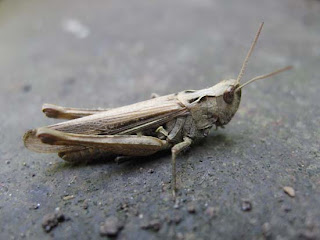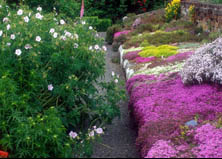The day after my trip to Harlow Carr (see previous posting) I went to the Harrogate Spring Flower Show, a visit I haven't been able to make for a few years because of being so busy running my own garden. After winter, it felt fabulous, all those 
colours and scents, enthusiasm and contented looking crowds enjoying great weather. There was so much to see that I was there all day, six hours on my feet, so no wonder I got diverted at one point from the plants to buy a pair of shoes from my favourite company, El Natura Lista, a Spanish firm that make amazingly comfortable eco shoes, dyed used plant material. In the exhibition halls there were banks and banks of colour from tulips, daffs, agapanthus, pelargoniums, carnations, lilies, all blowsy and immaculately presented. But it was the softer plants that I really  focused on, delicate woodland plants set off amongst moss, dry leaves and wood, and the sumptuous displays of vegetables too. A stand that particularly caught my attention was from Grow with Joe, a company from Leeds, who based their theme around India with a red fabrics and an image of the Taj Mahal in front of which rose tiers of garlic, chillies, aubergines, all full of colour. There was a definite trend towards edible produce, vegetable growing and even soft fruit - Rogers of Pickering, who also displayed bulbs (see photo) created a display of fruit bushes, rhubarb, strawberries, figs, quince, vines etc for the first time at a spring flower show in response to the enormous demand they have recently had for all types of fruit. If you want to read more about fruit and vegetables and the rest of the show, just copy & paste this link on The Journal website if you want to see what I wrote in the newspaper about the show.... http://www.journallive.co.uk/north-east-news/todays-news/2009/04/24/harrogate-spring-flower-show-61634-23468045/
focused on, delicate woodland plants set off amongst moss, dry leaves and wood, and the sumptuous displays of vegetables too. A stand that particularly caught my attention was from Grow with Joe, a company from Leeds, who based their theme around India with a red fabrics and an image of the Taj Mahal in front of which rose tiers of garlic, chillies, aubergines, all full of colour. There was a definite trend towards edible produce, vegetable growing and even soft fruit - Rogers of Pickering, who also displayed bulbs (see photo) created a display of fruit bushes, rhubarb, strawberries, figs, quince, vines etc for the first time at a spring flower show in response to the enormous demand they have recently had for all types of fruit. If you want to read more about fruit and vegetables and the rest of the show, just copy & paste this link on The Journal website if you want to see what I wrote in the newspaper about the show.... http://www.journallive.co.uk/north-east-news/todays-news/2009/04/24/harrogate-spring-flower-show-61634-23468045/
I thought there was some tat in the outside stands, obvious imports from China, naff  garden figurines and a surprisingly small amount of eco products. I found a system for distributing rainwater round the garden, a producer of beautiful split oak & hazel panels, a seaweed fertiliser from Shetland and one or two other good quality and interesting products but I thought there might have been more. It was inside that really was a delight with stalls such as Nick Hamilton's from Barnsdale Gardens (the late Geoff Hamilton's son who now runs the garden with his wife, Sue). Others were the faultess display by the Alpine Garden Society, euphorbias by Goldensfield, grasses from Eversley Nursery, such variety and too much to squeeze into one blog. More on the Journal website and good luck to anyone going tomorrow when the plants are sold off in late afternoon!!
garden figurines and a surprisingly small amount of eco products. I found a system for distributing rainwater round the garden, a producer of beautiful split oak & hazel panels, a seaweed fertiliser from Shetland and one or two other good quality and interesting products but I thought there might have been more. It was inside that really was a delight with stalls such as Nick Hamilton's from Barnsdale Gardens (the late Geoff Hamilton's son who now runs the garden with his wife, Sue). Others were the faultess display by the Alpine Garden Society, euphorbias by Goldensfield, grasses from Eversley Nursery, such variety and too much to squeeze into one blog. More on the Journal website and good luck to anyone going tomorrow when the plants are sold off in late afternoon!!
 One of the things that visitors say they will miss from our shop when the garden closes is the range of herbal creams that we have sold for the past nine years. Made in Scotland, with simple, unpretentious labelling and organic, straightforward ingredients, they will be missed by me too. So I thought I would let everyone know where they can still get them, especially as Jacqui who makes them, has just had her own website made.
One of the things that visitors say they will miss from our shop when the garden closes is the range of herbal creams that we have sold for the past nine years. Made in Scotland, with simple, unpretentious labelling and organic, straightforward ingredients, they will be missed by me too. So I thought I would let everyone know where they can still get them, especially as Jacqui who makes them, has just had her own website made. 









































